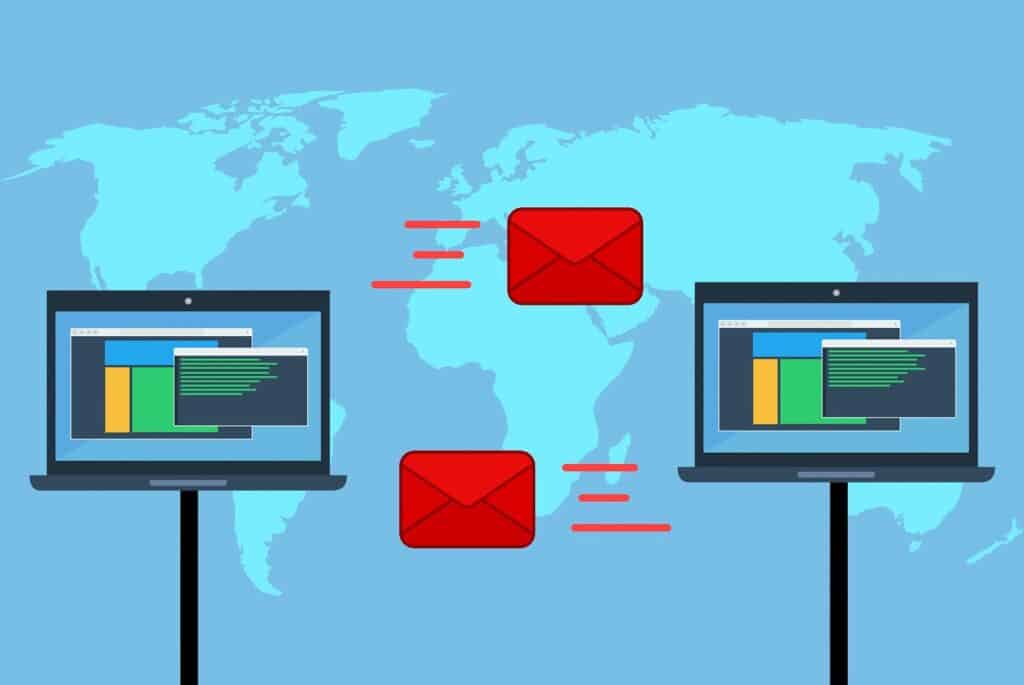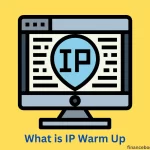Have you ever wondered how email is delivered from one person to another? This is exactly what SMTP Server is.
Email has become an important part of our everyday lives, and it’s hard to imagine a world without it. We use email to interact with coworkers, friends, and family, and it has become one of the most trustworthy forms of communication.
While joining the world of Email marketing, you must have heard the notion of an SMTP Server several times. What is SMTP Server, and is it a Mail Server? Why use an SMTP server for a large email campaign?
In today’s article, I will cover what SMTP Server is, how it works, and how important it is in sending emails. I will also answer some frequently asked questions about SMTP Server. So, let’s get started!
What Is SMTP Server?
SMTP is an acronym of (Simple Mail Transfer Protocol) simplified mail transfer protocol. This protocol has the principal role of sending mail, whereas the IMAP or POP3 protocol is responsible for receiving mail or accessing mail server data.
SMTP Server (server used to transmit mail) is a service that enables sending big volumes of email with rapid speed without constraints, like free Google mailboxes or mail with hosting. In other words, the servers that assist you in sending mail are generally called SMTP servers. They deliver mail through TCP or IP.
Normally, SMTP is set up to function through Internet port 25 (TCP). You know, in Europe, there is an alternative to Gmail’s SMTP extensively used, which is X.400. As a consequence, there are currently numerous email servers that support the so-called extensible, simple mail transfer protocol (ESMTP), which enables multimedia files to be transferred as email.
On the other hand, a mail system or a professional email has to learn about the protocols it will support since it will assist in enhancing job performance in the long run, owing to the capacity to send and receive messages. Mail swiftly, but you also need to consider that the ability to attach files and save them with large capacity will provide you additional benefits in long-term usage, save time converting companies, etc.
In addition to the SMTP protocol in email, other protocols are also extremely significant such as IMAP or POP3, to assist you in creating a system of business email packages that becomes the most complete and professional and contain many high characteristics.
What Are SMTP, POP3, And IMAP?
What is SMTP
SMTP (standard protocol for transmitting email). It creates the link between the mail client and the mail server, as well as the communication route between the sending and receiving mail servers. The email will be pushed from the mail client to the mail server, and from the mail server, it will be transmitted by this server to the receiving mail server.
What is POP3
POP3 (Post Office Protocol version 3) is used to connect to an email server and download email to a personal computer using an email client such as Outlook, Thunderbird, Windows Mail, or Mac Mail,…
What is IMAP
IMAP (Internet Message Access Protocol) draws emails to the email client. However, the difference with POP3 is that it just pulls email headers. The email content is still on the server. This is a 2-way communication channel. Modifications on the mail client will be transmitted to the server. Subsequently, this protocol gained widespread because the world’s biggest mail service, Google, suggested it instead of POP3.
How these 3 protocols work:
- After composing an email and clicking ‘send,’ your email client (e.g., Google, Thunderbird, Outlook, etc.) will use SMTP to transfer messages from your email client to the email server.
• Next, the email server will use SMTP to transport the message to the recipient’s receiving email server.
• After successfully receiving the SMTP transmission (indicated by the response code 250 OK), the recipient’s email client downloads the message using IMAP or POP3 and sets it in the inbox for access by the recipient.
Why Is SMTP Important?
Your email cannot be sent to the recipient’s address if there is no SMTP server. Because your email is converted into a string of codes and delivered to the SMTP server when you hit the “Send” button. The message may then be sent, and the code processed by the SMTP server. The email will thus be lost in translation if the SMTP server is not there to handle it.
Also, the SMTP server is crucial in determining whether the email is sent from an active account. This is the first step in keeping unlawful emails out of your inbox. More precisely, if the transfer is unsuccessful, it will also bounce the email back to the sender. This notifies the sender that their email address is invalid or that the receiving server has banned their message.
Email sending relies heavily on SMTP servers. Email sending and receiving would not be feasible without an SMTP server. SMTP Servers are essential for the reasons listed below.
• Authentication: Before enabling a sender to send an email, the SMTP server makes sure they are legitimate. By doing this, spam and fraudulent emails are reduced.
• Error handling: SMTP Server manages faults that happen during email transmission. SMTP Server returns an error message to the sender if an email message cannot be delivered.
• Relay emails: The SMTP server enables users to send messages to recipients on several email domains. Users may now send emails to anybody, regardless of their email provider.
• Security: SMTP Server employs encryption to guarantee that email communications are transmitted over the internet safely. As a result, it is more difficult for hackers to eavesdrop on and read email messages.
How SMTP Works

- Step 1: First, sending the message is initiated by forwarding the message to a specified SMTP Server.
- Step 2: Based on the domain name of the receiving email address (for example, ‘tenemail.com’), the SMTP Server initiates communication with a DNS Server, which will look up and return the hostname of the destination SMTP Server. (e.g., ‘mail.ten-email.com’) for that domain.
- Step 3: Finally, the first SMTP Server exchanges information directly with the destination SMTP Server through TCP/IP port 25.
- Step 4: If the username of the receiving email address matches one of the allowed user accounts in the destination server, the original email message will eventually be sent to this server, and then just wait for the recipient to get the message—notification through a program to send and receive mail (e.g., mail server Outlook for example).
Note: In case the first SMTP Server cannot communicate and exchange information directly with the destination server, does the SMTP protocol provide mechanisms for passing messages through one or more relay SMTP servers? Intermediate.
An intermediate server will then receive the original message and either send it to the destination server or send it again to another intermediate server. And this process will be manipulated many times until the notification is delivered or the notice retention period expires.
Benefits Of Using SMTP
SMTP is very important for sending and receiving emails. Here are some benefits of using SMTP:
- • SMTP enables scaling and deployment of systems for bulk email sending. If you manage newsletters or promotional emails, SMTP supports bulk emailing.
- SMTP sends emails more securely and efficiently by evaluating the sender and recipient of each message, as well as the content within the mail.
- The SMTP server provides local server options that allow for more flexible control over email delivery.
Is The SMTP Server An Email Server?
The SMTP Server is not an Email Server. SMTP Server is solely used to transmit email. And Email Server is a dedicated program to manage email resources.
Learn more: What is an Email Server?
Have you utilized email marketing services? For example, Amazon SES, Sendgrid, Sparkpost, Elastic email….etc. If so, you’ll discover they just assist in delivering your mail. When the receiver answers, you can’t check the messages on these services, but you must log in to the email account you have set up. Hence, it can be recognized that SMTP Server is a bulk email service.
Mail Server is an application specialized in managing network resources. Simply described, it gathers email, processes it, and then provides it to email clients. The mail server hosts everything from POP3, IMAP, SMTP, Exchange…etc services
For example, Gmail is an Email Server employing its own SMTP Server, smtp.gmail.com. And Twilio or Sendgrid (etc.) is SMTP Servers.
Why Use SMTP Server For Email Marketing Campaigns Instead Of A Mail Server?
SMTP Server is used to deliver bulk email, while Mail Server is used for information exchange
The distinction with Email Servers resides in the capacity of SMTP servers to send limitless bulk emails.
For example, Mail Server Gmail. This server establishes a limitation that users may only send a maximum of 500 emails/per day. Not authorized to send more.
Since Gmail serves objectives connected to business, personal, communication, and transaction… Not utilized for commercial or marketing reasons. So, if you breach their rules, you will be shut out of your account.
And SMTP Server specializes in delivering mass emails. You may even send hundreds of thousands of emails every day. Since these SMTP servers serve the functions of advertising, marketing, or customer care… And, of course, while utilizing, you must pay to send emails to these SMTP servers.
How To Set Up An SMTP Server
Now that you know all about SMTP servers. But setting up an SMTP server might be a difficult procedure, however here are some basic steps you can follow:
• Pick an SMTP server software: There are various SMTP server software solutions available, including Postfix, Exim, and Sendmail. Select one that meets your requirements and skills.
• Install the SMTP server software: After you have selected your SMTP server software, follow the installation instructions for your operating system.
• Setup the SMTP server: This step will differ based on the SMTP server software you have selected. Normally, you will need to set up parameters such as the domain name, IP address, and port number.
See also: How to create a free email with a domain name
• Setup the DNS records: In order for your SMTP server to be recognized by other servers, you will need to configure your DNS records. This entails setting up an MX record, which defines the hostname of your SMTP server.
• Set security settings: SMTP servers are a regular target for hackers. Thus, it is vital to establish security settings to safeguard against unauthorized access. This covers setting up firewalls, SSL/TLS encryption, and authentication.
• Test the SMTP server: Before utilizing your SMTP server in a production setting, it is vital to test it fully. This might entail sending test emails to confirm that the server is correctly sending and receiving messages.
• Monitor and maintain the SMTP server: After your SMTP server is up and running, it is vital to check it periodically for errors and execute maintenance chores such as upgrades and backups.
Conclusion
SMTP is an essential component of email communication, facilitating the sending and receiving of email messages between email servers. It provides various advantages, including dependability, security, flexibility, and efficiency.
Suppose you want to set up an SMTP server. In that case, there are various alternatives available, and it’s vital to select one that suits your demands and delivers the required functionality and security.
By learning the fundamentals of SMTP and its function in email communication, you’ll be better able to solve email difficulties and guarantee that your messages are sent consistently and securely. So, now that you know what SMTP Server is, go ahead and explore its possibilities and advantages!
FAQs about SMTP
These are some frequently asked questions and answers concerning SMTP:
What is an SMTP relay server?
An SMTP relay server is an intermediate server that accepts and forwards email messages between email servers. It’s typically used to enhance email delivery and avoid spam.
Can SMTP be used for bulk email marketing?
Sure, SMTP may be used for bulk email marketing, but it’s crucial to follow best practices and verify that you have authorization from recipients to send them email messages.
Is SMTP secure?
SMTP may be safe when used with encryption protocols, such as SSL or TLS. Therefore, it’s crucial to verify that your email client or program is set to utilize encryption while sending emails.
How can I know if my SMTP server is working correctly?
You may test your SMTP server by sending a test email message and seeing whether it’s delivered to the desired recipient. You may also inspect the SMTP server logs for any faults or concerns.
Can I use a free SMTP server?
Certainly, there are free SMTP server solutions available. However, they may have limits and may not give the same degree of dependability and security as commercial ones.
What are some common SMTP error codes?
Some frequent SMTP error codes are “550 No such user here,” which shows that the recipient’s email address is incorrect, and “421 Service not available, closing transmission channel,” which signals a temporary server fault.
What is the difference between an SMTP server and a POP3 server?
An SMTP server is used to send an email, while a POP3 is used to receive emails.
What are the most commonly used SMTP Server ports?
The most widely used SMTP Server ports are 25 and 587. Unencrypted email is sent through port 25, and encrypted email is carried on port 587.





